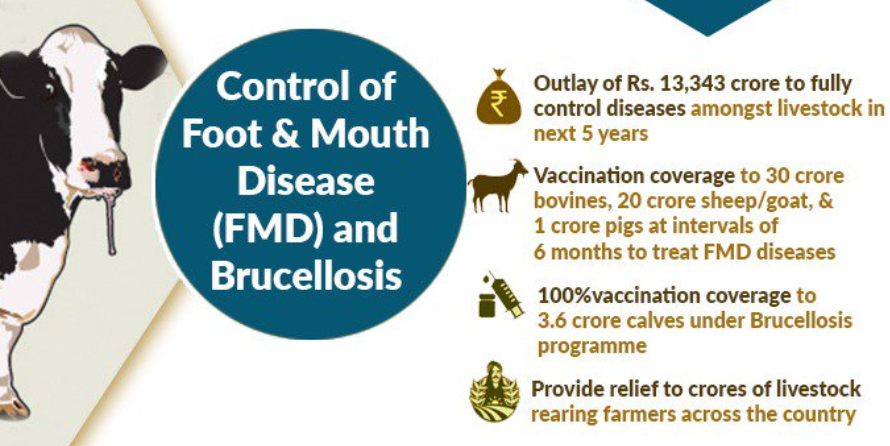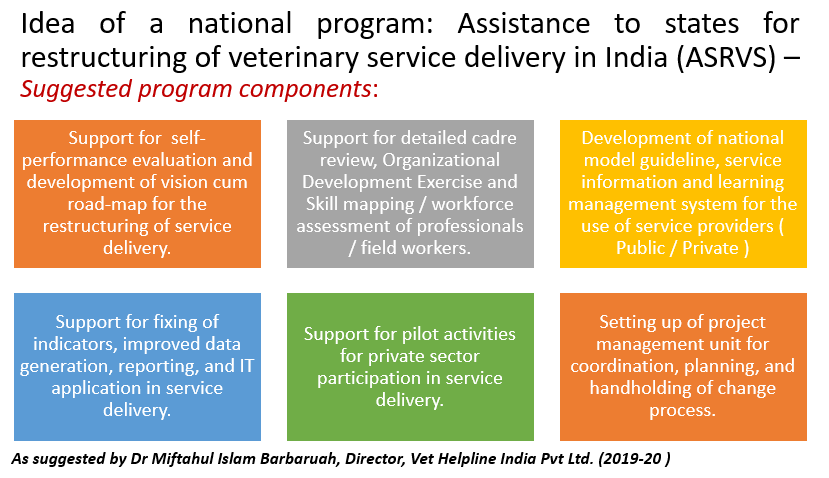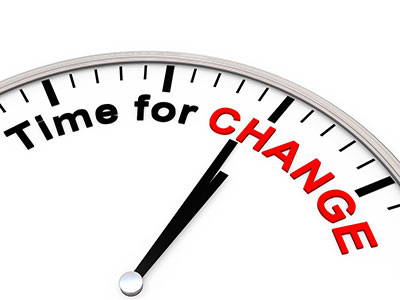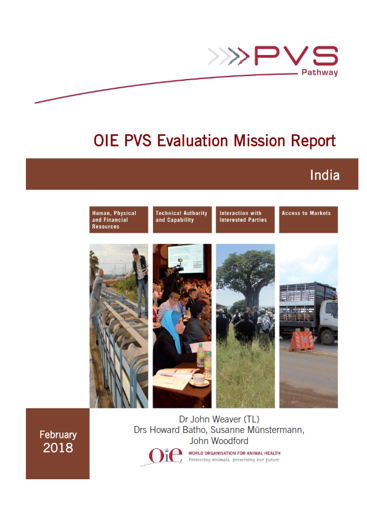
Context:
The Government of India, in recent years, has made renewed efforts at building the economy through investments targeting at achieving the livestock sector growth and farmers’ income thereof. Huge investments are currently ongoing within the Animal Husbandry and Veterinary sector.

Allocation and activity under the National Animal Disease Control Programme (NADCP) for foot and mouth disease and brucellosis in livestock
Animal Husbandry and Veterinary service is a state subject in India. It is essential to empower and build the capacity of state governments to deliver on the expected outcome of the program-based investments made. There is a need to augment structural changes for the much-needed improvement in veterinary service performance at par with global standards.
In November 2018, the Government of India published the first-ever report of performance evaluation of national veterinary services (PVS) in collaboration with the World Organization for animal health (OIE). The report, which is in the public domain, provided various recommendations.
The idea of a national program for the restructuring of veterinary services
Veterinary services in India, with the mandate of promoting animal health care, animal welfare, public health, and livestock production, play the crucial role of protection of health, improvement in nutrition, and economic well-being of the citizens. The development of veterinary services requires an appreciation of the larger role played by the services. There is an urgent need to change the perception that veterinary service is only for the health care of animals and to support livestock farming. A wider description of the mandate of the Animal Husbandry and Veterinary Department in various states is important in this context. The increased awareness and appreciation of the wider mandate are likely to translate into further improved budgetary support to institutions within the sector. It will also augment partnerships of veterinary institutions with institutions within the domain of agriculture, human health, and the environment.
With the changing scenario, National veterinary services in India also need to reorientation to ensure the following priority requirement such as:
- Efficient handling of the last-mile problem (e.g., infrastructure and workforce at the community level for extension services, vaccine delivery, the assortment of drugs in remote rural areas, etc.)
- Improved targeting and delivery of need-based public services, e.g., Public-private partnership with laboratory infrastructure in developed belts to support commercial farm growth, epidemiological services for trade facilitation from production clusters, public health services in urban areas, etc
- Appropriate arrangements to ensure continuous services (e.g., follow-up of every intervention) at the doorstep of farmers at the last mile
- Increased focus on the predominance of preventive actions, adherence to biosecurity, and food safety norms / Good Agricultural/husbandry Practices (GAP)
- Increase availability and use of laboratories (including pen side kits) for treatment/intervention based on confirmatory diagnosis against the current practice of predominant symptomatic treatment.
- Mandatory animal/farm premise identification for direct benefit transfer to farmers, improved disease control, and delivery of data-oriented herd health monitoring and productivity-linked services.
- A vibrant private sector friendly, technology-driven robust system for fast animal disease reporting, risk mapping, science-based disease outbreak investigation, transparent vaccine performance evaluation, monitoring of adverse drug reactions, etc.
With the above backdrop, it is imperative to initiate a long-term program at the national level to support states in the restructuring of veterinary services. The program may have the following components:
Component I:
Support to states for self-performance evaluation of veterinary services and development of vision cum roadmap for the restructuring of service delivery.
Component II:
Support to states for detailed cadre review, Organizational Development Exercise, and Skill mapping/workforce assessment of professionals/field workers.
Component III:
Development of model guidelines, national service information, and learning management system for the use of service providers (Public / Private)
Component IV:
Support to states for fixing indicators, improved data generation, reporting, and IT application in service delivery.
Component V:
Support for states for pilot activities for private sector participation in service delivery.
Component VI:
Support for program management unit for coordination, planning, and handholding of the change process.

The aim of activities under component -I is to list the gap vis-a-vis standards, specific requirements, etc. Standard tools like OIE-PVS can be helpful in this regard. State governments can outsource experts besides taking the help of officials, many of whom are already trained during the 2018 OIE Evaluation to use the PVS tools.
Component -II will need significant efforts toward change management, the study of existing systems and definitions, prerogatives, and regulation of various types of workforces.
As indicated in component -III, the model guidelines can aim at bringing uniformity across the states in areas like:
- The mandate of the line departments and key support agencies within the states with the scope of the partnership
- Adopted service delivery approach and models. (For different situations)
- The core competency of day-one veterinary personnel
- The education and continuous training of veterinary personnel, along with the scope of career progression
- Need assessment and norms of recruitment in public veterinary service.
- The design of cadre structure (Core and support) in public service vis a vis veterinary institutions at different levels and the chain of command
- Description of job responsibilities of veterinary personnel (Core and support) based on functions
- Norms for the outsourcing of select public services
- Private /non-government sector engagement in veterinary service delivery.
- The norms for data sharing as applicable to public/private entities in service delivery.
Under component -III, the program can support the development of a national platform or a learning management system using modern technology. The system can help in the administration, documentation, tracking, reporting, automation, and delivery of educational courses and training programs for registered public and private veterinary service providers. Such a platform can additionally provide essential information to service providers, such as government notifications and advisories, detail of animal health products and diagnostics, details of laboratory and logistic services, etc. Such a system will immensely help users build the internal capacity of animal health personnel working with them.
Under component IV, the state veterinary department can explore and reach into consensus on the appropriate indicators and implement an incentive mechanism to augment the generation of data. Information technology applications in service delivery will be crucial in this aspect.
The public sector in India predominantly funds veterinary service delivery. However, in recent years there has been positive growth in private service providers. The WOAH has recently documented numerous examples of Public-Private Partnerships (PPP) within the veterinary domain. Under component -V state government can support pilot activities to augment private sector participation in service delivery and also to explore possible Public-Private Partnerships for optimizing the animal health system.
A program management unit (PMU) in each of the states, as indicated under component VI, is of critical importance in driving the entire program to achieve the desired outcome. The PMU will have to make a continuous assessment of needs, prepare a communication strategy, map resources, coordinate partnerships, and guide in the grounding of state-specific strategic thoughts for the restructuring of service delivery.
Suggested program guiding principle
The program’s Guiding principle can be the 5 A’s of Veterinary Service delivery as discussed below:
- Availability: What can be done to ensure the availability of veterinary services, particularly in rural areas?
- Accessibility: How can we improve access to veterinary services?
- Acceptability: What can we do to make veterinary service more acceptable to animal owners?
- Adequacy: When do we consider veterinary service adequate? What can be done to ensure adequacy?
- Affordability: How can we make veterinary service affordable to the rural poor?
Each state government can design its intervention with the following 7 ‘I’ framework:
Institution: The new institutional change that is required.
Infrastructure: The needed infrastructure.
Investment: Nature and scope of investment.
Innovation: The scope of doing things differently.
Input: The pre-requisite for veterinary service delivery
Incentive: The benefit and job environment of the service provider (Public / Private)
Inclusion: Measures for taking services to excluded groups (e.g., Owner of work animals)
Way forward
Animal Husbandry and Veterinary service is a state subject in India. As such, demand for such a national program to support the states should ideally come from state animal husbandry and veterinary departments. Department of Animal Husbandry and Veterinary, Government of India, can play the crucial role of initiating a national-level discussion to inform states and all other stakeholders regarding the need and benefit of such a program. The initiative on the part of the central government will be the follow-up activity of the OIE-PVS evaluation 2018. A task force comprising of experts and representatives of states can look into the scope and detailed design of the program.

It is not easy to initiate and implement a change program on a national scale. It can begin with a pilot involving a few willing states. It is imperative that a critical mass of change agents commits to and participate in the change process as local leaders. Leadership programs and stakeholder consultations will be necessary. Service and professional associations must extend a helping hand to the government. It is a long-standing demand of various service associations that the government should make budgetary provisions and engage more professionals in public service. A restructuring of the service delivery can help address the core issue of resource optimization, a better work environment, sustainable public-private partnership, and above all, improved professional / service standards.
Support of political leaders, administrators, development/subject matter experts, and other policy initiators will be of paramount importance. A restructuring program is needed to meet the national expectation in terms of a better outcome of ongoing investments and earmarked future investments within the livestock sector to build the national economy.
Note:
A part of the article is reproduced from the background paper prepared by the author for the National Seminar on ‘Restructuring and Strengthening of Veterinary Service Delivery System in the Nation‘ organized by the Indian Veterinary Association, held on 28th June 2019. The author also submitted the idea of a national program for the restructuring of veterinary services through the My Gov platform under the section’ idea and suggestions for Union Budget 2020-2′, Government of India.
Citation:

Barbaruah Miftahul, Conceptualizing a national program: Assistance to states for the restructuring of veterinary service delivery in India (ASRVS), The Vet Helpline E-magazine, Category: Veterinary Service Delivery and Practice Management, Vol VIII (2020) ISSN 2454-9282



